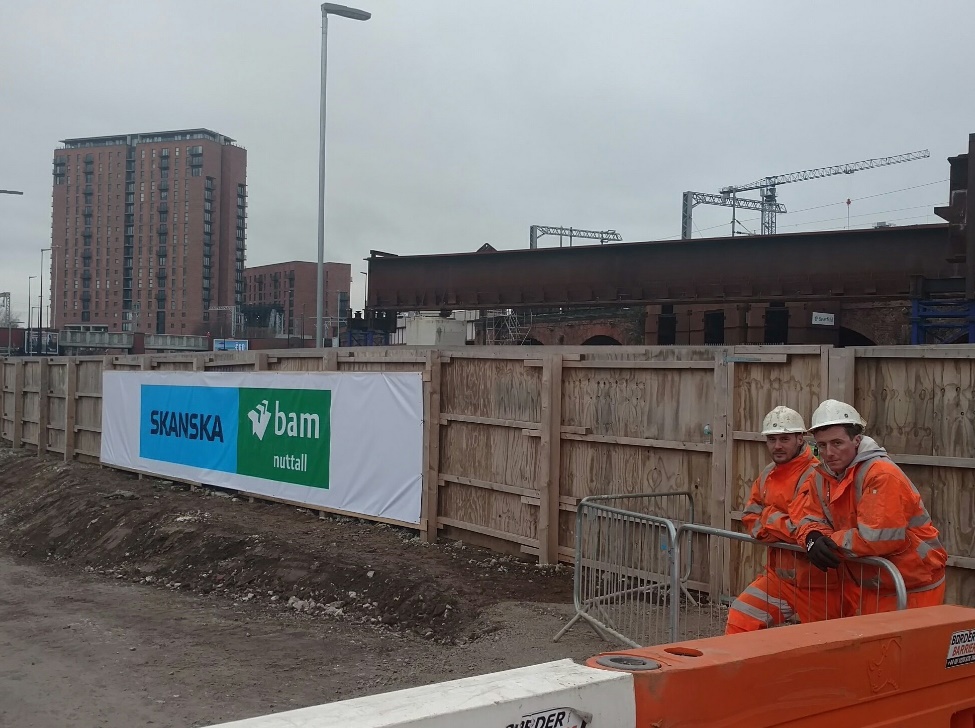21.02.17
TfN: Ordsall Chord success ‘an example of what NR can achieve with time and money’
Network Rail is likely to use the Ordsall Chord’s success story as a “really good example” of how when they’re given the support, time and money, they can “really deliver these pieces of infrastructure”, Transport for the North (TfN) boss David Brown told RTM.
Speaking on the banks of the Irwell River in Manchester, over which the brand-new network arch bridge was being lifted into place in the background, Brown sang the praises of the project, which is on track to be delivered on time and budget as a result of tight-knit alliance working between suppliers.
Works started on the project – which is set to connect Manchester’s three main stations for the first time – in 2015. A major 15-day blockade was set up over the festive period last year to renew and reconfigure the existing railway between Eccles and Deansgate, and another extended possession is expected in Easter – the only two major disruptive periods the project will cause to the local area.
“That’s what we want to see – we want to see Network Rail taking on board these big projects and delivering them within the budget and on time,” argued Brown, who said a lot of commuters travelling into Manchester were already seeing the “storyboard unfolding in front of their eyes”.
But the Chord has been quite a conceptual project until today, with a lot of the work done behind the scenes, such as commissioning Siemens signalling – one of the most complex the company has ever arranged, which Northern programmes director Chris Montgomery told RTM would be controlled by the local ROC – and realigning track.
Yet today’s accomplishment, which saw the project’s Skanska/BAM Nuttall JV lift the 600-tonne network arch into place in one continuous piece, finally brought the project into the tangible foreground. In fact, for the attendees present, it was history being made before our very eyes: witnessing the arch, the first of its kind in the UK, being lifted by one of the biggest cranes in Europe onto Manchester’s skyline, where it will remain for the next century.
“My son is commuting at the moment from Lancaster to Manchester every day, and he saw this development today and was delighted,” Brown told us, “and when he goes home tonight, it’ll be in place.
“I’m sure Network Rail are going to use this as one of their really good examples of how when they’re given the support, the time and the money, they really can deliver these pieces of infrastructure. Now we need them to go on and do the rest across the north.”
The TfN CEO also hailed the project’s local supply chain: while the network arch was built and put together in Bolton by Severfield, the project’s other partners – including Skanska, BAM Nuttall, Mott MacDonald, Siemens, Aecom, Amey Sersa and WSP Parsons Brinckerhoff – have mostly all worked together in the same office, sharing intelligence and swapping skills.
“It’s great for the local economy while they’re doing it, but also, these people have the skills now. We’d love to find more projects for them to move onto in the north,” added Brown. “In my ideal world, we’d have people coming out of education that can come straight onto these projects to learn the experience, and then we give them a set of programmes and projects that they can work on for the whole of their career. Why do they need to go anywhere else if we have schemes like this across the north?”

Keith Gardner, project director for main engineering partner Skanska, also praised the suppliers’ alliance model of working.
“You don’t really have this client/contract relationship; it’s more ‘we’re all in it together’, and that works really well,” he told RTM. “If we didn’t have the alliance model, I don’t think we’d be here at this point in time.
“There’s been a lot of benefits, such as working more efficiently together and sharing resources. A lot of contractors will try and do everything, but some things they’re not particularly good at, whereas other contractors are. And we have this ability to swap scope to make it better for the project.”
The arch is now officially in place over the Irwell River, sitting in one of the most historic sites of the country next to Stephenson’s Grade I listed bridge, which was built in 1830 and was the first passenger railway in the world.
One of the cranes used to lift the arches, a Liebherr LR11350 crawler crane, is the largest in the UK and one of the biggest in Europe. It took 35 wagons to deliver the crane and it was built on site – much like the network arch, which was transported to Irwell Street in around 40 pieces, welded flat on the floor, rotated vertically, moved up and then lowered into place.
Full coverage of today’s arch lowering, including interviews with Brown, Montgomery, Gardner and Northern Hub Alliance project director Mike Heywood, will appear in the upcoming February/March issue of RTM.